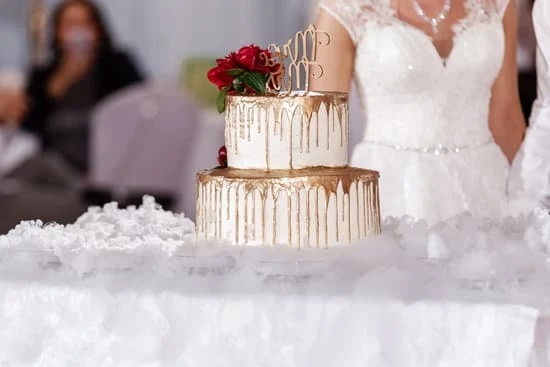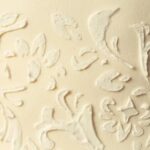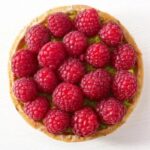Candy decorated cakes have taken the baking world by storm, bringing a sweet and colorful twist to traditional cake decorating. More and more bakers and dessert enthusiasts are embracing this trend, creating stunning confectionery masterpieces that not only look amazing but also taste delicious. The use of various candies as decorations on cakes adds a playful and whimsical touch, perfect for special occasions or simply to satisfy a sweet tooth.
The history of candy decorated cakes dates back to the early days of cake decorating, where bakers started experimenting with different types of candies to adorn their creations. Over the years, this unique method has evolved into a popular trend, with bakers finding innovative ways to incorporate an array of candies onto their cakes. From gummy bears to chocolate bars and everything in between, the options for candy decorations are endless, allowing for endless creativity in cake design.
In this article, we will delve into the origins and evolution of candy decorated cakes, exploring the types of candies that can be used for decoration and detailing the tools and techniques needed to create these edible works of art.
Whether you’re a seasoned baker looking to try something new or a beginner eager to learn, we’ve got you covered with tips, creative ideas, pros and cons, step-by-step tutorials, and an inspiring gallery of candy decorated cakes to spark your imagination.
Join us on this delectable journey into the world of candy decorated cakes.
History of Candy Decorated Cakes
Candy decorated cakes have taken the baking world by storm, adding a whimsical and playful touch to traditional cake designs. The trend of using candy as decorations on cakes has gained popularity due to its ability to add vibrant colors, interesting textures, and a sweet flavor to desserts. This unique cake decorating method appeals to both children and adults alike, making it a versatile choice for any occasion.
The history of candy decorated cakes can be traced back to ancient civilizations that used sugary treats as embellishments for special celebrations and events. Over the years, this tradition has evolved into a modern art form, with bakers experimenting with different types of candies, shapes, and designs to create visually stunning creations. Today, candy decorated cakes are seen at birthday parties, weddings, baby showers, and even corporate events as a fun and creative way to showcase edible art.
When it comes to choosing the right candies for decorating cakes, the options are practically endless. From classic favorites like gummy bears and colorful sprinkles to more sophisticated choices like chocolate dragees and fondant-covered chocolates, bakers have a wide variety of candies to choose from. Whether you’re aiming for a playful and whimsical design or a more elegant and refined look, there is a candy out there that will perfectly complement your cake creation.
- Gummy bears
- Chocolate bars
- Lollipops
- Candied fruit slices
- Sprinkles
Types of Candy Used
Candy decoration on cakes opens a world of creativity and fun for bakers and cake decorators. The types of candy used to adorn cakes are diverse, offering a wide range of colors, textures, and flavors to choose from. From the chewy goodness of gummy bears to the rich decadence of chocolate bars, the possibilities are endless when it comes to incorporating candy into cake designs.
Gummy Candies
Gummy candies like gummy worms, gummy bears, and gummy rings are popular choices for decorating cakes due to their vibrant colors and playful shapes. These chewy treats can be arranged in patterns or scattered across the cake top to add a whimsical touch. Gummy candies are also versatile as they can be easily cut or shaped to fit specific design ideas.
Chocolate Treats
Chocolate lovers rejoice – chocolate candies such as mini chocolate bars, chocolate-covered pretzels, and chocolate truffles make excellent decorations for cakes. The rich flavor and smooth texture of chocolate add a touch of indulgence to any cake design. Whether melted into drips or carefully placed as accents, chocolate candies bring a touch of elegance to candy decorated cakes.
Hard Candies
Hard candies offer a crunchy texture and intense sweetness that can enhance the overall flavor profile of a cake. Peppermints, lollipops, rock candy crystals, and Jolly Ranchers are just some examples of hard candies that can be used creatively in cake decorating. They can be crushed into edible glitter, melted into colorful shards, or even attached as edible jewels on cakes for a dazzling effect.
Incorporating different types of candies into cake designs gives bakers the opportunity to experiment with textures, colors, and flavors to create visually stunning and delicious creations that will surely impress any sweet tooth.
Tools and Techniques
When it comes to creating visually stunning and unique candy decorated cakes, having the right tools and techniques is essential. Whether you are a beginner or an experienced baker looking to elevate your cake decorating skills, there are certain key elements you need to master.
Tools Needed
To start off, you will need a variety of tools to create beautiful candy decorations on cakes. Some essential tools include offset spatulas for spreading frosting smoothly, piping bags and tips for intricate designs, and a cake turntable for easy application of decorations. Additionally, investing in a good quality set of food-safe scissors and tweezers can make it easier to handle delicate candy pieces with precision.
Techniques for Candy Decorations
One popular technique for incorporating candy into cake decorations is using them as toppings or fillings. For example, crushed candies can be sprinkled on top of frosting for a colorful and textured finish. Another technique is creating edible artwork by arranging candy in patterns or shapes directly onto the cake surface. Moreover, melting chocolate and using it as glue to attach candies can add both visual appeal and delicious flavor to your creations.
Tips for Beginners
If you are new to creating candy decorated cakes, start by practicing with simple designs before moving on to more intricate patterns. Experiment with different types of candies to see which ones work best for your aesthetic preferences.
Remember that practice makes perfect, so don’t be discouraged if your first few attempts don’t turn out exactly as planned. And most importantly, have fun with the creative process – there are endless possibilities when it comes to incorporating candy into cake decorating.
Creative Ideas for Candy Decorated Cakes
Candy decorated cakes are a fun and whimsical way to take your cake decorating skills to the next level. Not only do they add a pop of color and texture to your creations, but they also offer a wide range of creative possibilities. From simple designs using a few candy elements to more elaborate and intricate displays, the options are truly endless when it comes to incorporating candy into cake designs.
To help you get started on your candy decorated cake journey, here are some creative ideas to inspire your next baking project:
- Create a colorful explosion by layering different types of candies on top of your cake for a vibrant and eye-catching look.
- Use candy melts or chocolate molds to create intricate shapes and designs that can be placed on the sides or top of your cake as edible decorations.
- Incorporate popular candy bars like Kit Kats or Twix into your cake design by using them as borders or even crushing them up as toppings for added flavor and texture.
Whether you’re looking to create a fun birthday cake for a child’s party or want to impress guests at a special event, candy decorated cakes offer a playful and unique twist that is sure to delight everyone with a sweet tooth. So unleash your creativity and have fun experimenting with different types of candies to bring your cake designs to life.
Pros and Cons
Candy decorated cakes have taken the baking world by storm, adding a whimsical and colorful touch to traditional cake designs. While these creations are visually appealing and versatile, there are certain pros and cons to consider when using candy as cake decorations.
One of the major advantages of incorporating candy into cake decorating is the endless variety of colors, shapes, and flavors available. From vibrant gummy bears to rich chocolate bars, candies offer a wide range of options for customizing cakes to suit any theme or occasion.
On the other hand, one downside of using candy as cake decorations is the shelf life of these sweet embellishments. Depending on the type of candy used, certain varieties may start to melt or lose their shape over time, affecting the overall appearance of the cake.
It’s important to consider factors such as humidity and temperature when working with candy decorations to ensure that they remain intact until serving. Additionally, some candies may not be suitable for individuals with dietary restrictions or allergies, making it crucial to communicate clearly with clients or guests about the ingredients used in the cake.
| Advantages | Disadvantages |
|---|---|
| Wide variety in colors & flavors | Shelf life concerns |
| Versatile for customization | Potential for melting or misshaping |
| Creative possibilities in design | Allergy concerns for some individuals |
By understanding both the benefits and limitations of using candy as cake decorations, bakers can enhance their skills and create stunning confectionery masterpieces that delight both the eyes and taste buds alike. Whether you’re a beginner looking to try your hand at decorating cakes with candies or a seasoned professional seeking new inspiration, incorporating sweets into your designs can elevate your creations to a whole new level of artistry and creativity.
Step-by-Step Tutorial
The process of creating a stunning candy decorated cake is not as complex as it may seem. With the right tools, techniques, and a little bit of creativity, you can create a masterpiece that will impress your friends and family.
To start, gather all the necessary ingredients and tools for your cake. Make sure you have your favorite type of cake batter prepared and ready to bake. Once your cake is cooling, you can start preparing your candies for decoration. From colorful sprinkles to chocolate bars and gummy bears, the possibilities are endless when it comes to choosing the perfect candies for your design.
Next, comes the fun part – decorating your cake with candy. You can get as creative as you want with this step. Whether you want to create a pattern using different colored candies or go for a more random design by scattering them around the cake, the choice is yours. Using frosting as glue, carefully place each piece of candy onto the cake until you have achieved your desired look.
Once your candy decorated cake is complete, take a step back and admire your work of art. Not only will it look visually appealing but it will also taste delicious with every bite. Get ready to impress your guests with your unique creation that combines two beloved treats – cakes and candies.
| Tip | Details |
|---|---|
| Creative License | Feel free to experiment with different types of candies and designs to make your cake truly one-of-a-kind. |
| Frosting Consistency | Ensure that the frosting you use to stick the candies on the cake is firm enough to hold them in place. |
| Presentation | Consider adding a ribbon or personalized message on top of the cake for an extra special touch. |
Inspiration Gallery
Candy decorated cakes have taken the baking world by storm, offering a fun and vibrant way to add color and flavor to your desserts. By incorporating a variety of candies into cake designs, bakers can create eye-catching masterpieces that are sure to impress. From gummy bears to chocolate bars, the possibilities are endless when it comes to decorating with candy.
The history of candy decorated cakes dates back to early cake decorating techniques, but has evolved over time to become a popular trend in modern baking. With the use of tools and techniques such as piping bags and fondant cutters, bakers can create intricate designs that bring cakes to life. Whether you’re a beginner or seasoned baker, experimenting with candy decorations can elevate your cakes from ordinary to extraordinary.
While there are certainly pros and cons to using candy as cake decorations – such as considerations for shelf life and taste preferences – the creative possibilities far outweigh any drawbacks. By following step-by-step tutorials and drawing inspiration from stunning candy decorated cakes in galleries, bakers can unleash their creativity and create confectionery works of art that are not only visually appealing but delicious as well.
So why not dive into the world of candy decorated cakes and let your imagination run wild?
Frequently Asked Questions
How to Make Candy Cake Decorations?
Making candy cake decorations is a fun and creative process that can add a colorful and unique touch to any cake. To start, gather an assortment of candies in different shapes, sizes, and colors.
Then, use frosting or melted chocolate to attach the candies to the cake in patterns or designs of your choice. Let your imagination run wild as you create a sweet masterpiece that will surely impress your guests.
How to Decorate a Cake With Lollies?
Decorating a cake with lollies is a simple yet effective way to add some whimsy and sweetness to your dessert. Start by choosing a variety of lollipops, gummy candies, or other colorful sweets that complement the flavor of the cake.
Arrange the lollies on top of the frosted cake in a visually appealing pattern or design. Feel free to get creative with shapes, colors, and textures to make your cake truly stand out.
How Do You Make a Birthday Cake Look Good?
Making a birthday cake look good involves a combination of creativity, attention to detail, and personalization. Start by selecting a theme or color scheme that suits the birthday celebrant’s preferences. Choose high-quality ingredients for both the cake and frosting to ensure a delicious taste.
Use piping bags, edible decorations, fresh fruits, or flowers to adorn the cake beautifully. Remember that it’s not just about how it looks but also how it tastes – so focus on creating a visually stunning AND scrumptious birthday treat for all to enjoy!

Welcome to our cake decorating blog! My name is Destiny Flores, and I am the proud owner of a cake decorating business named Cake Karma. Our mission is to provide delicious, beautiful cakes for all occasions. We specialize in creating custom cakes that are tailored specifically to each customer’s individual needs and tastes.





